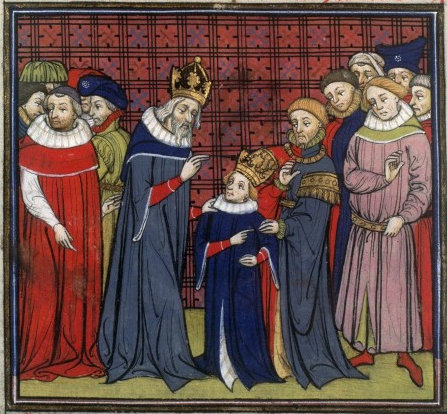
Early Middle Ages
Unit 1
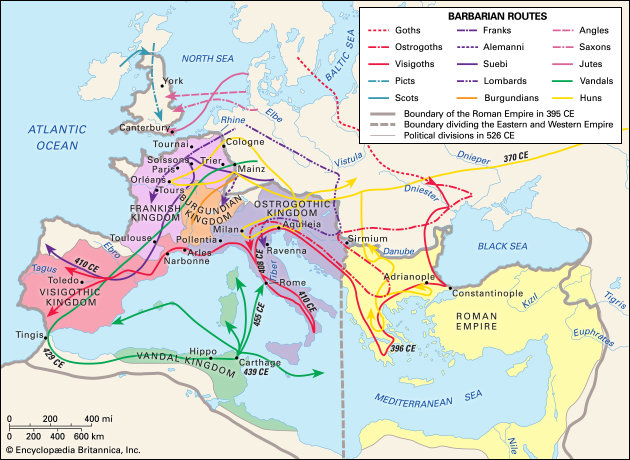
In 3rd and 4th Century AD
Roman Empire was invaded
by HUNS and GERMANIC Tribes
Huns
Asian steppe
nomadic animal herders
Germanic tribes
North and East Europe
farmers : animals and agriculture
Barbarians
Roman called the these people
Barbarians
= foreign (extrañeros) and savage


Economic exchanges
Joined the Roman army
Barbarians
Friends and Enemies of the Romans
Violent attacks against Roman cities
Settled in Roman territory peacefully

Emperor CONSTANTINE
Moved the capital from Rome to Constantinople
Emperor THEODOSIUS
Divided the Roman Empire
Western and Eastern Empire

The Byzantine Empire
in the Eastern Roman Empire
and lasted 1000 years.
Invasions Western Roman Empire

Atilla the Hun attacked the Gemanic tribes
and
the Roman Empire
Germanic tribes escaped from the Huns attacks and
invaded the Western Roman Empire
looking for a safe place

Germanic tribes
settled in different parts
of the Roman Empire
ODOACER a Germanic Chieftain
deposed the
last western Roman Emperor
ROMULUS AUGUSTULUS

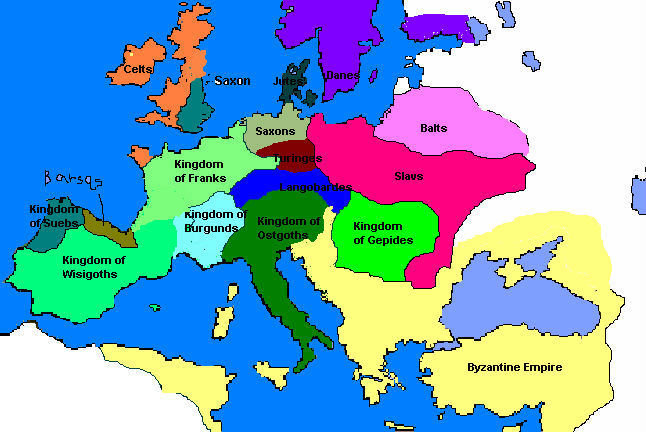
Germanic tribes formed small kingdoms
the Western Roman Empire
Angles and Saxons
Germanic and Roman populations
LANGUAGE
New languages emerged
LAW
Combination of Roman law with Germanic customs
No written laws
Religion
Pagan Germanic Tribes
converted to Arianism then Christianity
Germanic influence
German Dutch English
Latin influence
Spanish French Italian
Rural Life
People left cities
moved to the villages
Crops and animal farming
Post Roman society
No long distance travel
Exchanged farm products


Religious clergy - monks
lived there
Had a lot of land
Recieved donations

Post Roman society
Monasteries
Religious clergy - monks
lived there
Had a lot of land
Had a lot of land
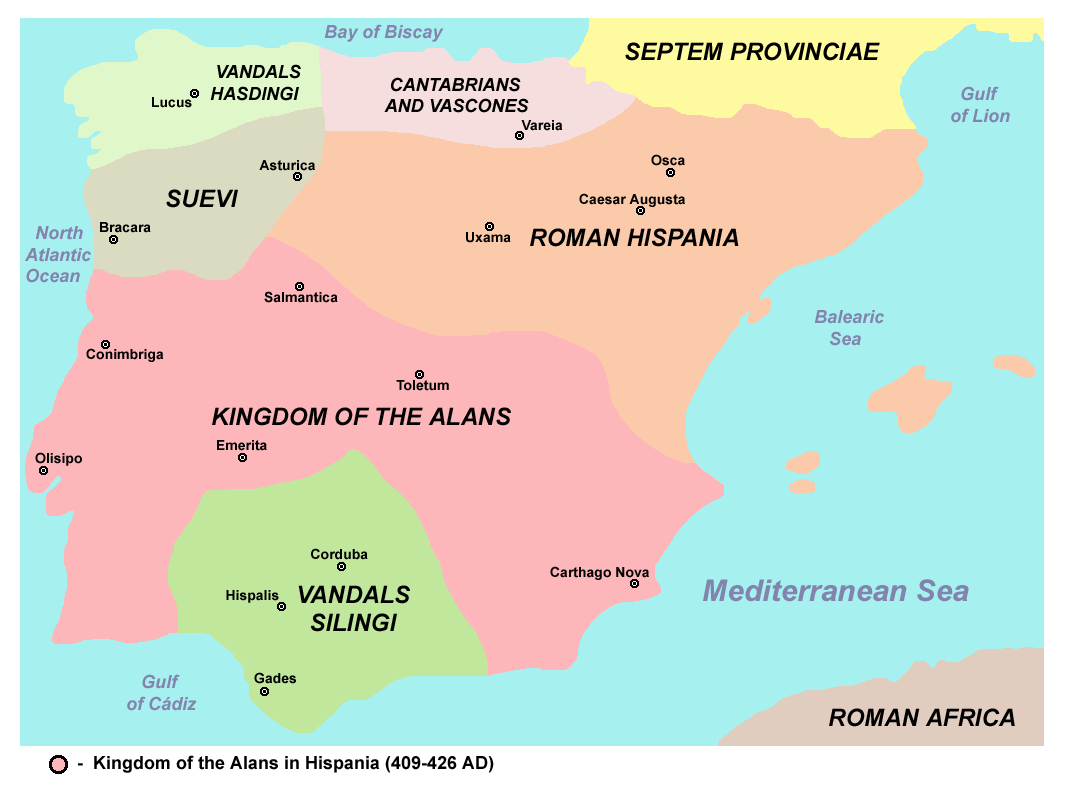
In 416
Roman Emperor
asked Visigoths
to expel the SUEVIs, VANDALs and ALANs
from the Iberian Peninsula

Roman Emperor Honorius
gave the VISIGOTHS
Gaul in south-west France and
most of the Iberian Peninsula
Visigoths acted as representatives
for the Romans
Capital - TOULOUSE

In 507AD
FRANKS wanted
access to
the Mediterranean Sea
Pushed
the VISIGOTHS
out of Gaul
Visigoths moved the capital to TOLEDO
Toledo
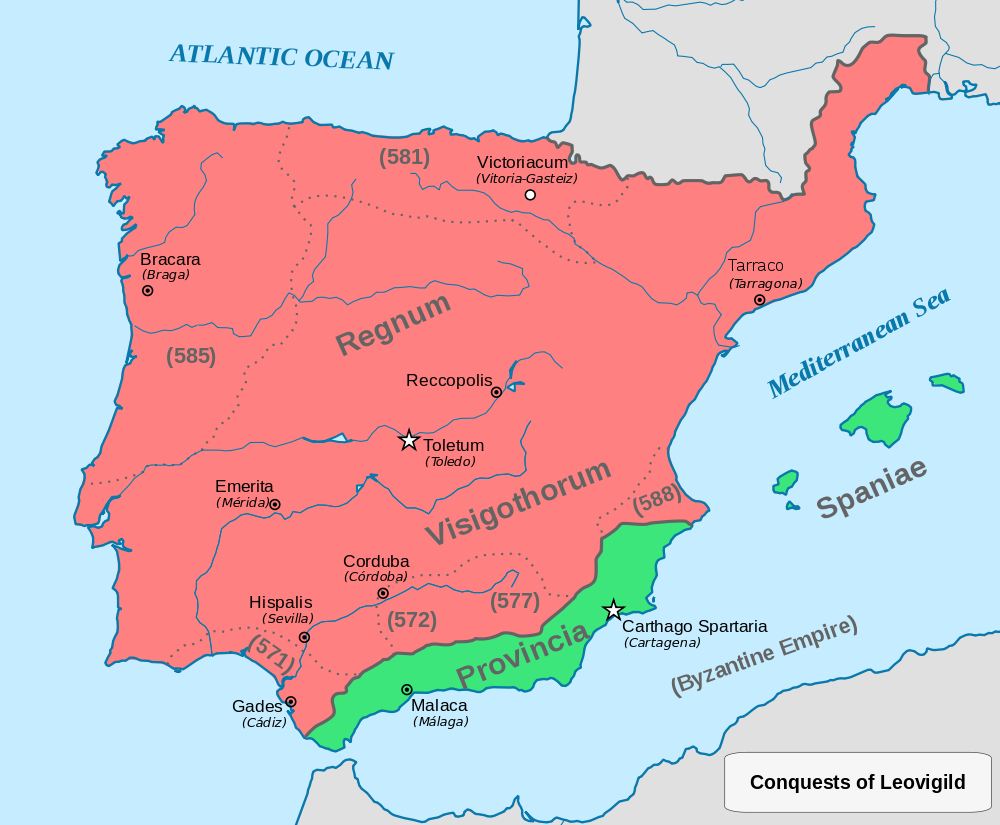
Visigoths Glorious Period
568AD to 672AD
His son RECCARED
made the kingdom CHRISTIAN
King Recceswinth
unified the laws
KING LEOVIGILD expanded the Visigothic Kingdom
Society and economy

Nobles and clergy
- important politically
owned most of the land
Peasants - majority, small plots of land
Slaves - belonged to clergy and nobles
Economy - agriculture and crafts


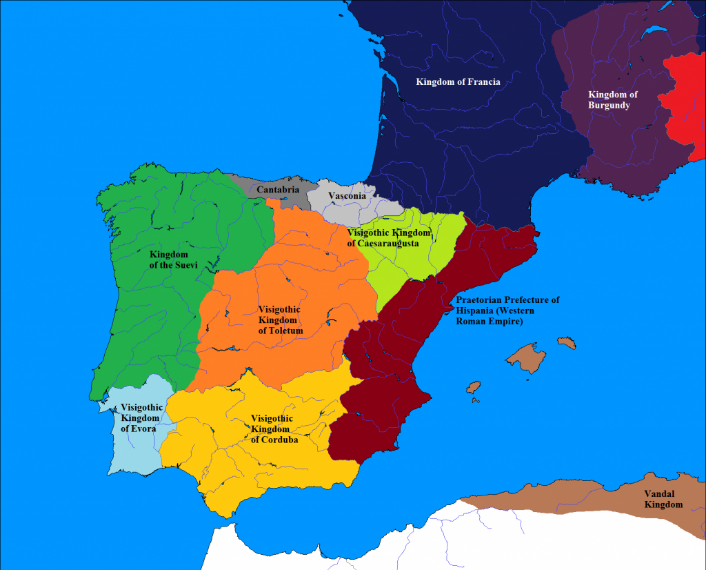
However,
in 7th Century
Visigothic kingdom divided and internal fighting began
This weakened the Visigoth Kingdoms,
and ....
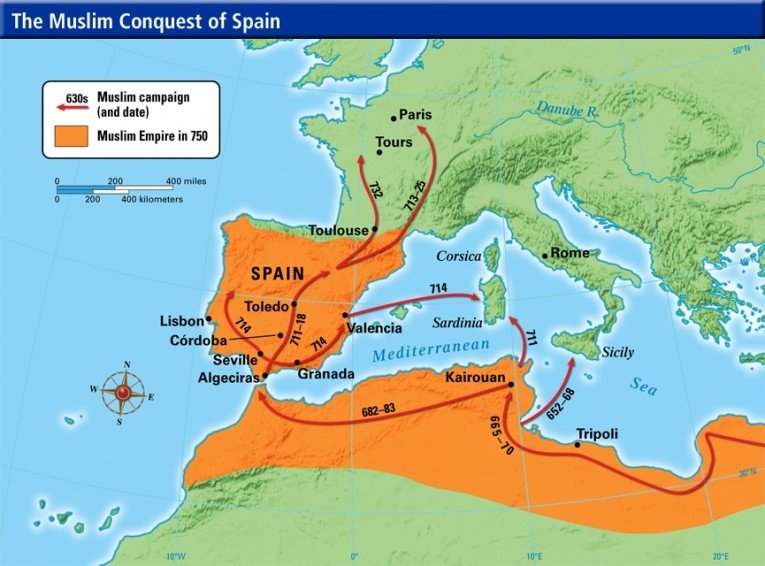
In 711AD
The Islamic Empire invaded and conquered the Iberian Peninsula.
Text
The Visigothic kingdoms
disappeared.
Click on the arrow and watch the video
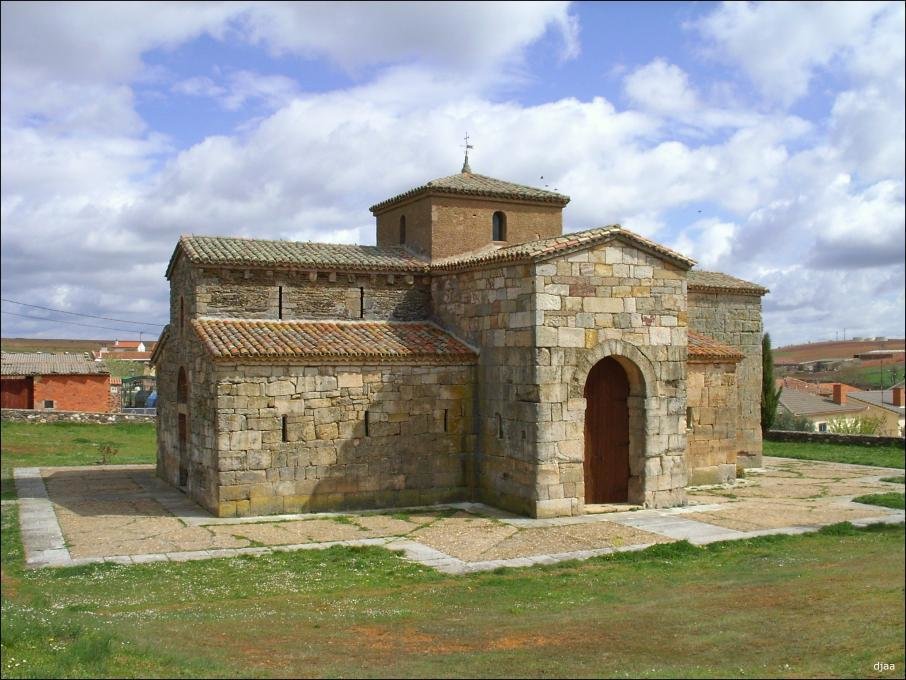
San Pedro de la Nave, Campillo, Zamora
One of the most important
Visigothic Churchs
San Pedro de la Nave, Campillo, Zamora

The Byzantine Empire
395 - 1453AD
The Eastern Roman Empire
/ Byzantine Empire
Capital - Constantinople
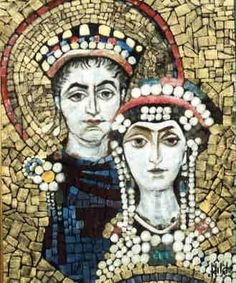
Justinian and,
his wife,Theodora
527-565CE
The Byzantine Empire
Ruled the government, army and
religious leaders together.
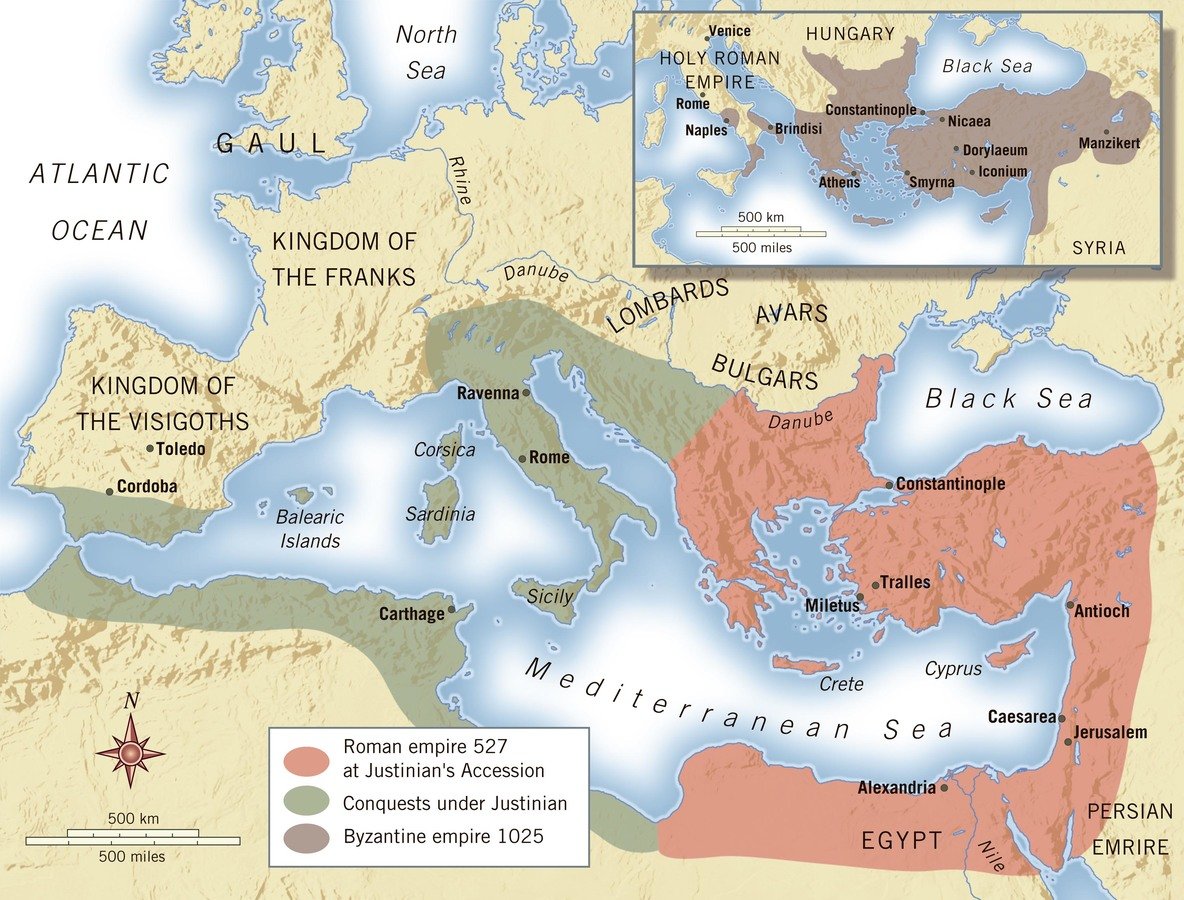
He invaded and conquered
ITALY,
IBERIAN PENINSULA
and NORTH AFRICAN COAST
JUSTINIAN
wanted to rebuild the Roman Empire
so...
Dominated the coast of Mediterraneean Sea
and
controlled trade between
East and West
Created gold coins
to make trading easier
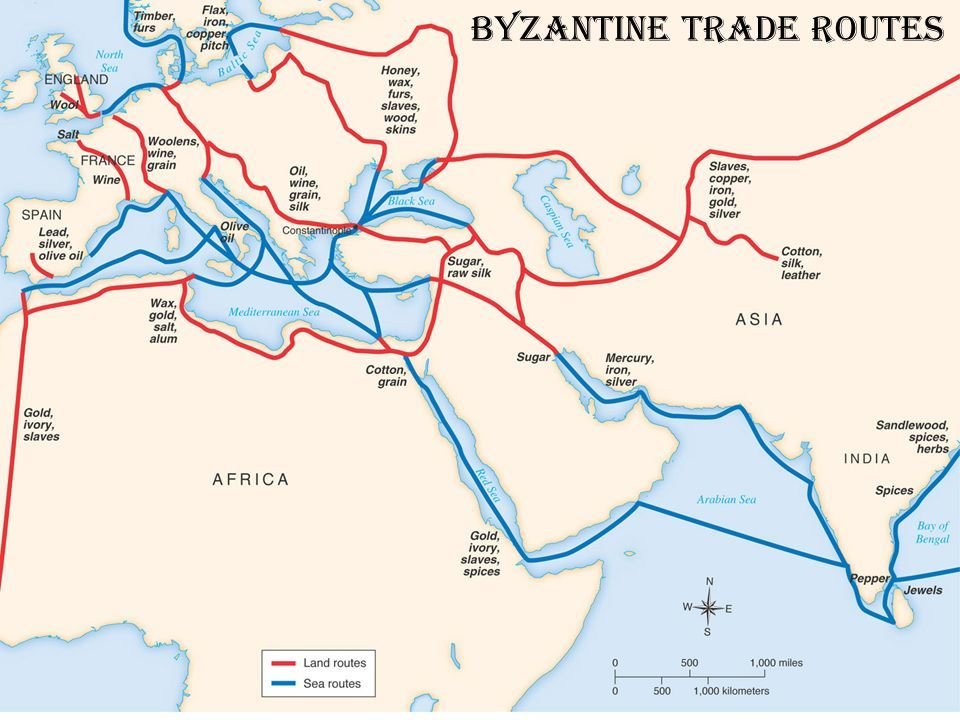
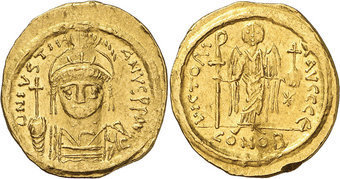
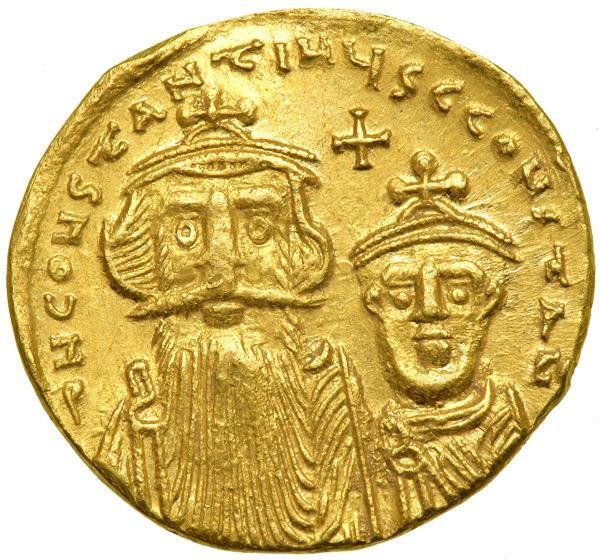
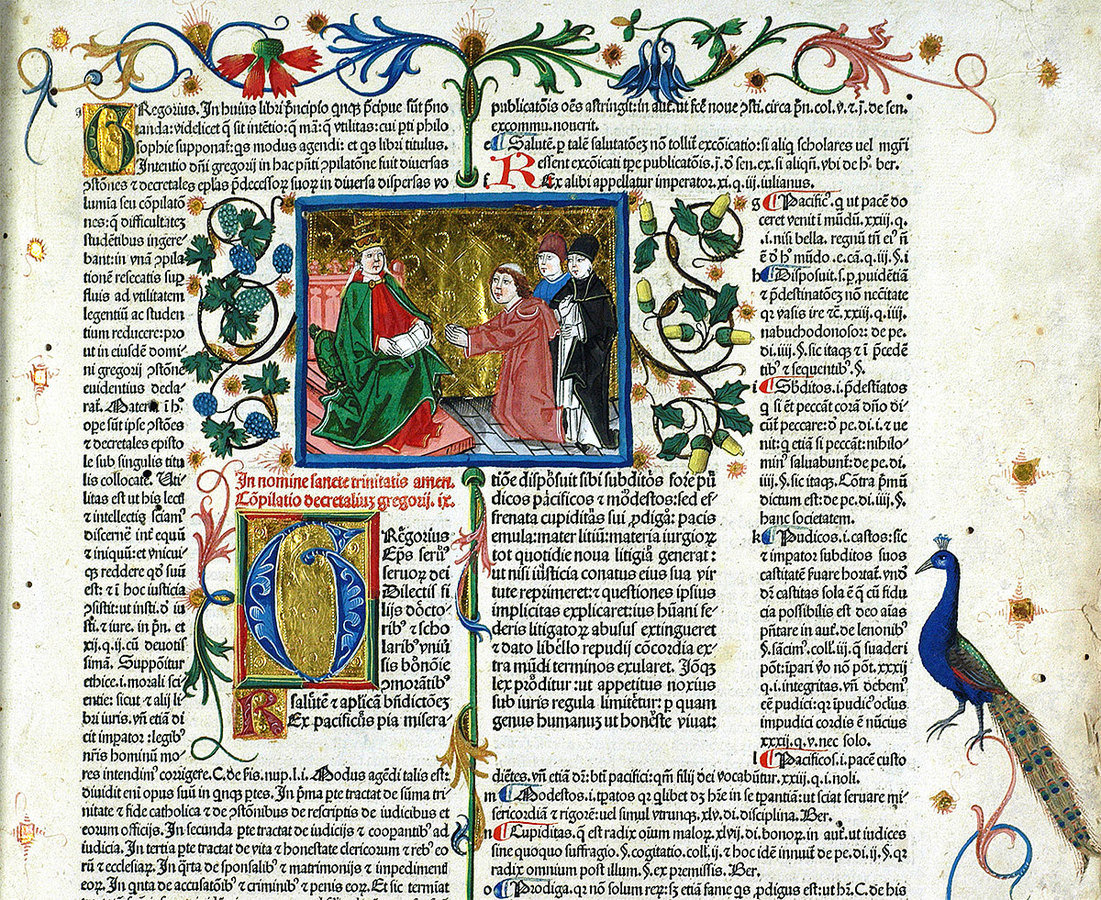
Recuperated and modernized Roman Law
The Justinian Code
This document
was called
"INNOCENT UNTIL
PROVEN GUILTY"
Justinian's rule (527-565AD)
well organized government
powerful military
Fall of the Byzantine Empire

After Justinian death in 565CE
the Byzantine Empire began to lose territories
Difficult to defend and protect borders
6th Century
Lombards
conquered Italian Peninsula
7th Century
Lost southern
Iberian Peninsula
to the Visigoths
7th and 8th Century
Islamic Empire
began to conquer
territories
around the eastern coasts
of Mediterranean Sea
During the 11th and 14th Century the Muslims and Turks conquered most of the Byzantine Empire

In 1453
Turks conquered Constantinople

Basileus / emperor
Patriarch of Constantinople
- Pope highest religious leader
Artisans, merchants, soldiers,
free peasants
Servants and slaves
Byzantine Society - pyramid
Byzantine Society - pyramid





Byzantine cities
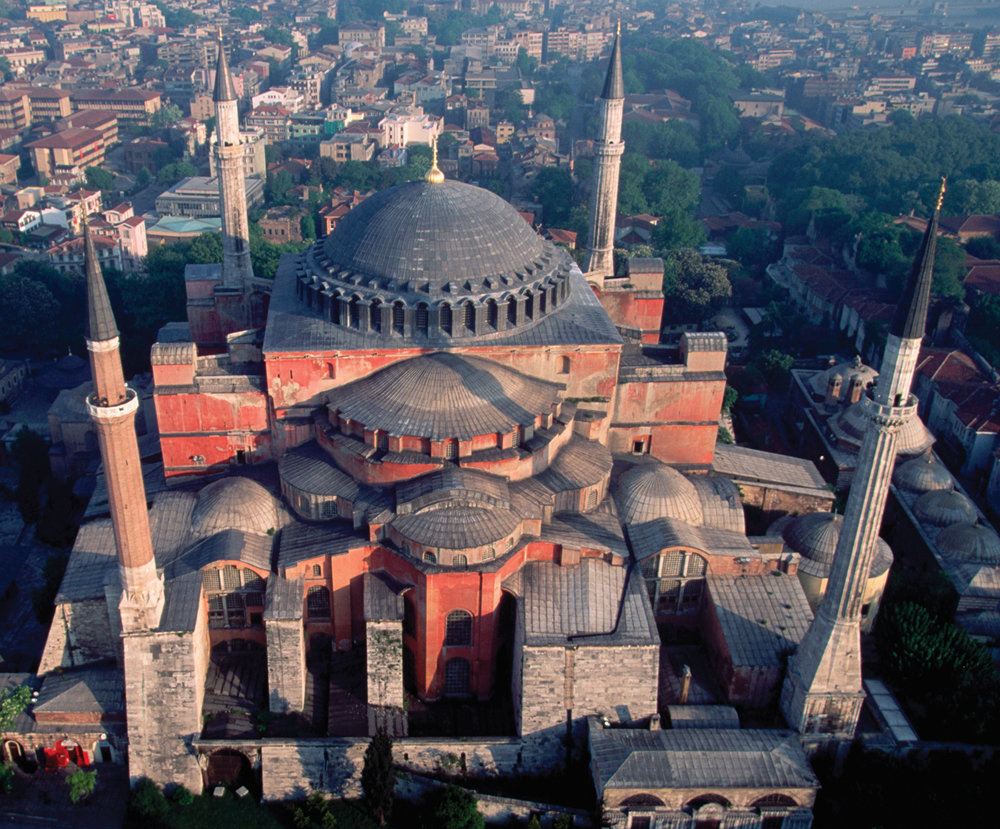
Hagia Sophia
Hagia Sofia
The most important church in the Byzantine Empire
Built in 5 years (532-537CE)
during Justinian reign
Why did the church change
into a mosque (mezquita) ?
What happened to the mosaics?
What changed when the Hagia Sofia
became a mosque, and why?
watch the video and
answer the questions
Religion changed
EAST -WEST SCHISM
East
CATHOLIC ORTHODOX CHURCH
they didn't recognize the POPE's authority
Leader - Basileus/Emperor
West
ROMAN CATHOLIC CHURCH
Leader - Pope
in 1054
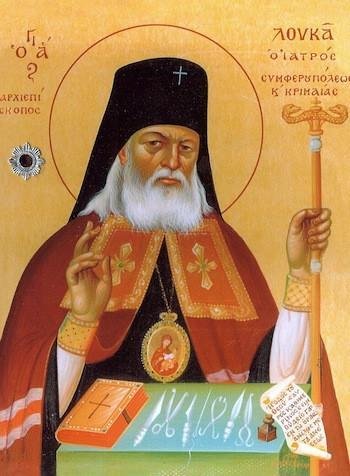
Roman Catholic church divided
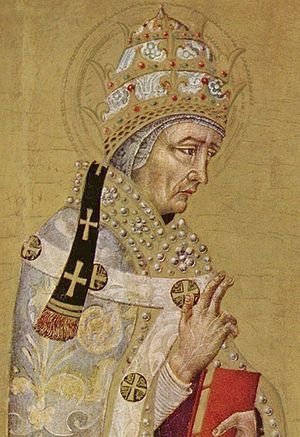
Culture and art changed
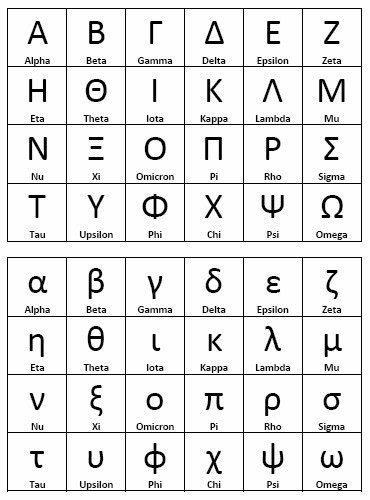
Greek Alphabet
Greek replaced Latin
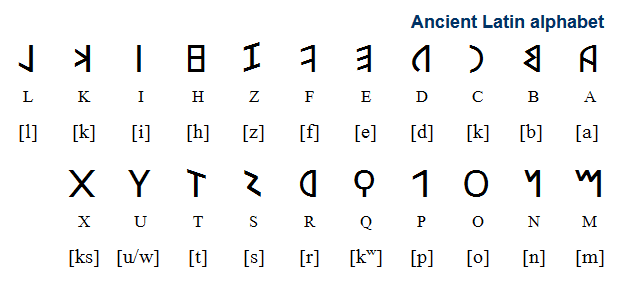
Latin Alphabet
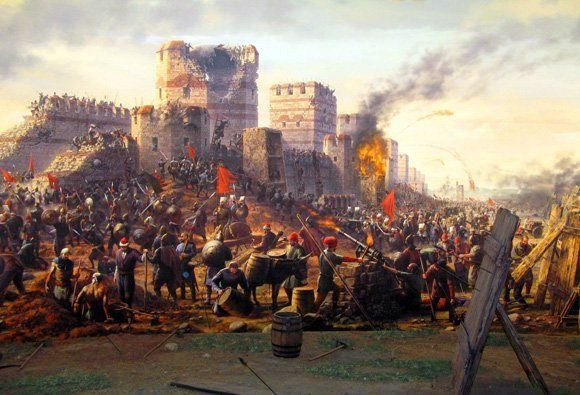
the OTTOMAN TURKS conquered CONSTANTINOPLE
ending the BYZANTINE EMPIRE
In 1453, almost 1000 years
after its beginning...
Fall of the Byzantine Empire
Islamic Empire
the Religion

Started in Arabian Peninsula
Arabs lived in tribes
- Each tribe was polytheistic
- Constantly fighting
- Shared MECCA as their holy land
The Origins of Islam

Nomadic animal herders
Polytheistic

Mecca holy city

Muhammad (570-632) - rich merchant from Mecca
started a new monotheistic religion - Islam
Other rich merchant didn't accept his teachings so....

...he escaped to
Medina in 622
This was the beginning of the Islamic calendar - Hegira

Muhammad built an army in Medina

When Muhammad died
the Islamic Empire spread across the Arabian Peninsula
In 630
He returned to Mecca and captured the city


Orthodox Caliphate
- Conquered Arabian peninsula, Egypt and Persia
- Capital was Medina
- Caliphs were the descendents of Muhammad
- Ended when Ali ( the caliph) was killed
Omeya/Ummayad Caliphate

Conquered from Persia to the Iberian Peninsula
The Battle of Poitiers 732 stopped the Muslim invasion of Frankish Kingdom
The conquered territories were divided into EMIRATES/provinces
EMIR was the ruler of the EMIRATE
Omeya/Ummayad Caliphate
Most of the
Umayyad family was killed
except for
Abd al-Rahman
escaped to
the Iberian Peninsula

Ummayad family controlled the Caliphate of Cordoba
in the Iberian Peninsula
Revolt between the Abbasid family and Umayyad family

Turks invaded
Mongols invaded Bagdad
Killed the last Abbasid caliph
Moved capital to Bagdad
Internal conflicts
Abbasid Caliphate
Lost control over territories - Al Andalus
UNIT 1 Early Middle Ages 2025-26
By txecor
UNIT 1 Early Middle Ages 2025-26
- 1,458


